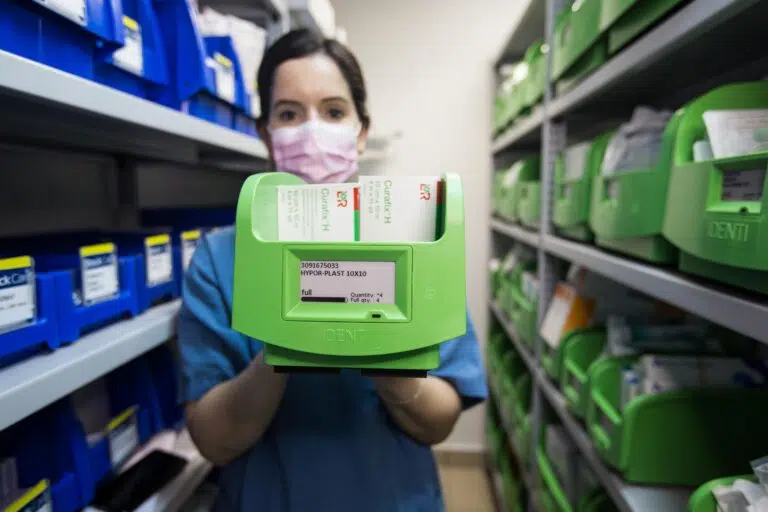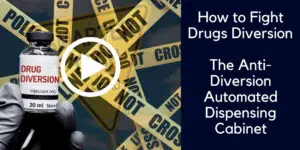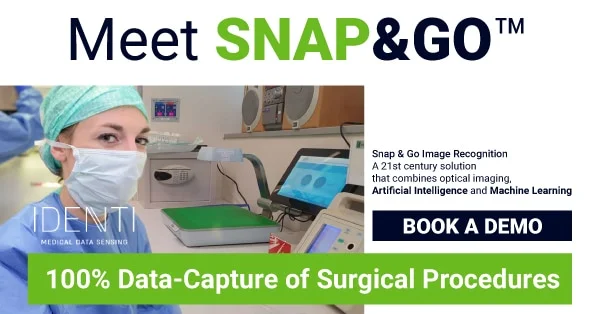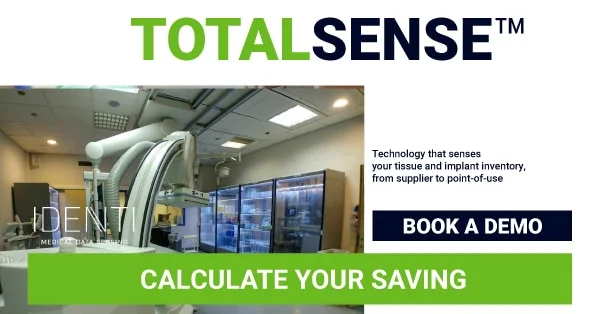What’s inside:
A recent drugs diversion case at an ambulatory surgery center sheds light on critical security lapses in pharmaceutical inventory management. This blog will look into this issue and discuss the security requirements of an automated dispensing cabinet.
Inside:
- Learn from this case to prevent drugs diversion and safeguard patients and communities.
- Explore six key security lapses that contributed to the theft of narcotics and controlled drugs
- Discover how an effective automated dispensing cabinet solution can enhance pharmaceutical inventory security in healthcare facilities.
I’d like to walk through a recent drugs diversion case where a nurse at an Indiana ambulatory surgery center was charged with stealing hundreds of narcotics over a 6-month period.
When decentralized dispensing is carried out in clinical areas, the organization needs to have a strong pharmaceutical inventory management system in place that gives the organization full vision and control of this. An automated dispensing cabinet is a common solution but which security features should providers look out for?
Recent drugs diversion case
In this case, the nurse allegedly changed the system so that she was the only one with access to the cabinet, but in the end her drugs discrepancies were discovered.
It turns out the items removed amounted to 300 hydrocodone and acetaminophen pills, 20 Oxycontin pills, 97 Percocet pills, 100 Tramadol pills and 39 vials of fentanyl. In addition, 270 expired Oxycontin pills were not disposed of, as instructed.
The process was for pill counts to be logged at the end of each day, but this task was not undertaken after a few months of her working at the outpatient center.
The center reported that they ended up having to cancel appointments due to a lack of medication.
Taking action against drugs diversion
There are so many indicators of poor security and management in this case, that I wanted to go through these and look at how to prevent this situation from occurring at other healthcare facilities.
Drugs diversion cases are always an important reminder of the need for good practice around the management of pharmaceutical inventory in ambulatory surgery centers and other healthcare facilities, so that drugs diversion is prevented and patients, plus the wider community, are protected.
So, let’s go through some of the pharmacy inventory management practices at this surgery center, and take on board some learning points. Here are 6 security lapses that can lead to drugs diversion.
1. Secure cabinets – system access
At the surgery center the nurse changed the system so that she was the only person with access to the cabinet. This in itself should have raised eyebrows, and it was this action that prevented the issue from being discovered earlier – it took around 6 months for her drugs theft to be discovered.
Security access: There is no security issue in having multiple users, as a good system ensures everyone accessing the system goes through security steps to authenticate them as a user, before being allowed entry into the system. Users can be identified and authorized using biometrics, face recognition, passwords or card swipes.
Drugs access: Access to a full cabinet of pharmaceutical stock should not be made possible. User access should be limited to only those items entered into the system against a specific patient.
Security solution:
Single cell dispensing is an excellent method of controlling user access to just those items logged for dispensing. This system not only limits access to a particular drug, but also ensures the dosage required is the only dosage they are given access too. Single cell dispensing offers the greatest flexibility in terms of providing access to the exact drug, in the requested quantity and not allowing users to take any other item.
Pharmaceutical inventory requires strong process and robust security. A top quality automated dispensing cabinet with built-in security features that prevent drugs diversion, can provide stringent safeguards.
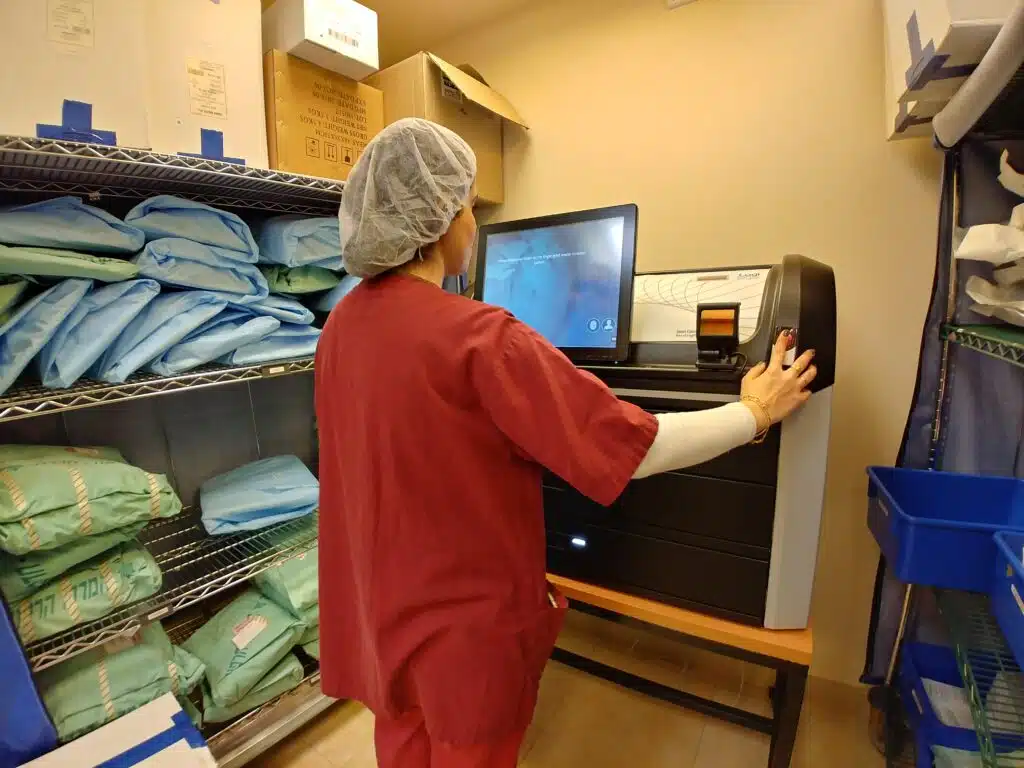
2. Narcotics cabinet – visibility of controlled drugs and narcotics
Best practice is for cabinets to have oversight from both pharmacy and clinical contacts – so that full and real-time visibility of stock-levels and dispensing records are available.
Both types of users have different roles.
- Pharmacist inventory management: Pharmacists need to view the stock to monitor expiry, ensure prompt restocking of items that are in short supply, and monitor clinician usage.
- Clinicianal dispensing: Clinicians need to be able to dispense drugs for patients, digitally recording the items that are given to each patient.
Visibility solution:
A good automated dispensing system for decentralized dispending will have dual access and system functionality that facilitates pharmacy management and clinician dispensing.
It is important that when clinician-led dispensing is practiced by healthcare providers, that the pharmacy retains an active management role. It is ultimately the Pharmacy Department that retains responsibility for all controlled drugs, narcotics and medication that is dispensed at the point of care – so the automated dispensing cabinet used must ensure full pharmaceutical vision and control.
3. Automatic dispensing – user tracking
Modern automated dispensing cabinets ensure that all individual users have all their drugs cabinet activity digitally tracked. That means every action is logged in the system, dosages and drugs dispensed, returns and wastage activity.
This digital tracking ensures full user accountability and helps organizations to spot suspicious activity at the earliest opportunity.
User tracking solution:
Tracking the activity of every user is vital to ensure full oversight of user activity and is an important step in deterring drugs diversion activity.
Automated dispensing cabinets need to digitally track every action of each user.
4. Medication dispensing – item tracking
Every drug dispensed, including the exact dosage, needs to be digitally logged against the patient, the case and the dispensing clinician.
This not only helps the pharmacy department with item-level consumption tracking, for informed procurement, but it also ensures that the medical records for the case are complete and correct.
In addition, returns and wastage should also be tracked, not just usage. This is critical.
Many systems have a general pharmacy returns bin or drawer, so not only can the details of which clinician returned which drug, in what quantity, for which patient all be unclear, but you may also be giving clinical staff access to the returned items of others.
Returns work best when the are individually tracked using a single cell returns method. Wasted drugs also need to be reconciled on the system. Ultimately the pharmacist needs to understand what happened to every item removed from the cabinet whether it was fully used, partially used, wasted or returned.
Drugs tracking solution:
The best automated dispensing cabinets track every item with this degree of detail, and it is this strong control that makes diverting drugs so much more difficult.
Digital, item-level tracking is an important feature of any automated dispending cabinet. Look out for systems that are interoperable with hospital software, such as the ERP and EHR, for maximum impact.
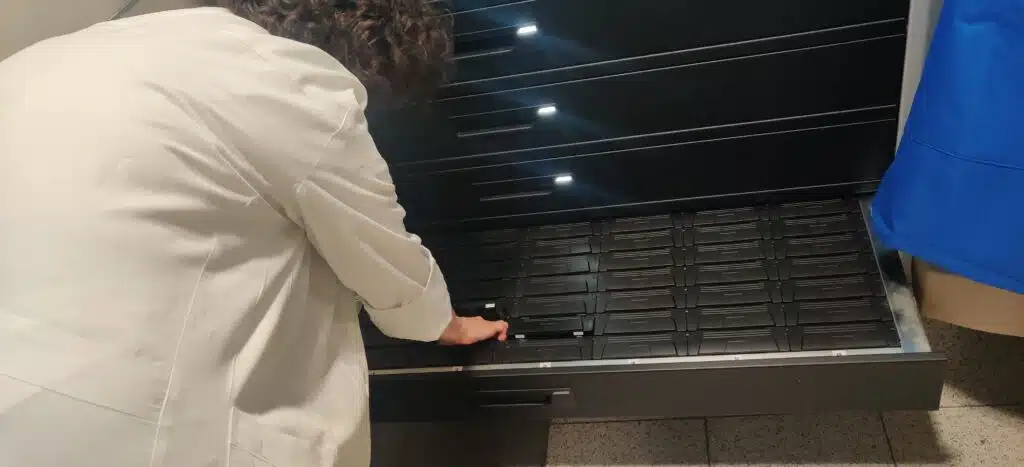
5. Decentralized automated dispensing devices and expiry management
In the drugs diversion case at the Indiana surgery center, it was reported that 270 expired items were not disposed of, as requested.
This is another indicator of poor process.
❔ Why had 270 items expired and not been used?
❔ Were the items ordered when there was little demand for them?
❔ Was the stock poorly rotated so that items ended up being wasted rather than used?
❔ Why if the expiry order was given, was it not followed up sooner?
❔Were expired items promptly removed from the cabinet to avoid accidental usage?
❔Were checks made to ensure the items were properly disposed of and recorded as such in the system?
Expiry management is a patient safety and compliance issue. Processes need to ensure the prompt removal and disposal of expired drugs and medication as per the hospital’s protocols.
Expiry management solution:
Pharmaceutical expiry management needs very careful oversight. Pharmacists need to monitor their inventory, rotate stock, and endeavor to prioritize the usage of items that are due to expire.
Expired items are a patient safety risk and must be easily identified and removed from the cabinet if patient safety standards and regulatory compliance is to be upheld.
But more than this, proactive expiry management should ensure all items are used prior to expiry, preventing them from expiring on the shelves, representing significant wasted costs and preventing patients from the risk of dispensing unsafe items.
6. Automated drug dispensing system – drug shortages and stockouts
The Indiana outpatients center reportedly ended up having to cancel patient appointments due to medication stockouts.
Pharmacy procurement solution:
An automated dispensing cabinet should effectively monitor all drugs dispensing activity, with real-time usage figures informing procurement, and preventing delays.
With single cell, precise digital tracking of usage, wastage and returns there is total clarity on dispensing and demand-driven restocking can be achieved, preventing surpluses,
When procurement is proactive shortages and stockouts can be prevented, so that no patient has a cancelled appointment, risking their wellbeing.
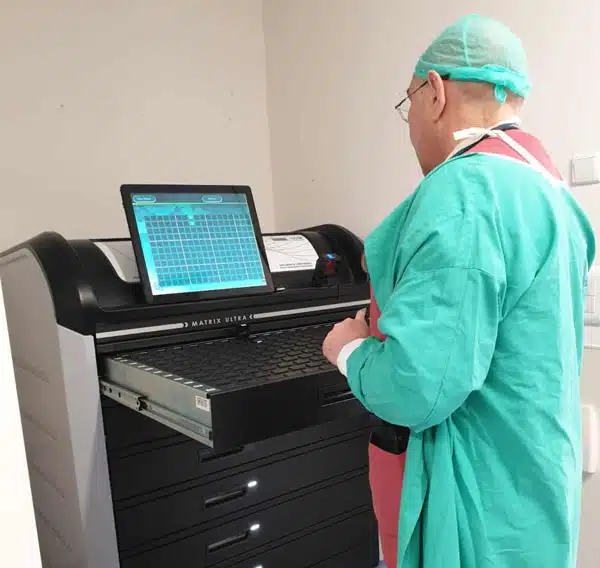
Diversion management – preventing drugs diversion in healthcare
The recent drugs diversion case in Indiana underscores the importance of robust security measures in pharmaceutical inventory management.
By addressing key security lapses and implementing effective and automated pharmacy dispensing machines, healthcare facilities can prevent theft and diversion of controlled drugs, ensuring patient safety and regulatory compliance.
Check out IDENTI’s Secured Narcotics, Drugs and Medication Cabinet for comprehensive security solutions tailored to decentralized dispensing settings. This advanced automated dispensing cabinet contains ALL the security solutions we’ve covered in this article and is custom designed for decentralized dispending in operating rooms, procedural areas and community health setting.
Get in touch to find out how you can gain full control of your pharmaceutical inventory.

